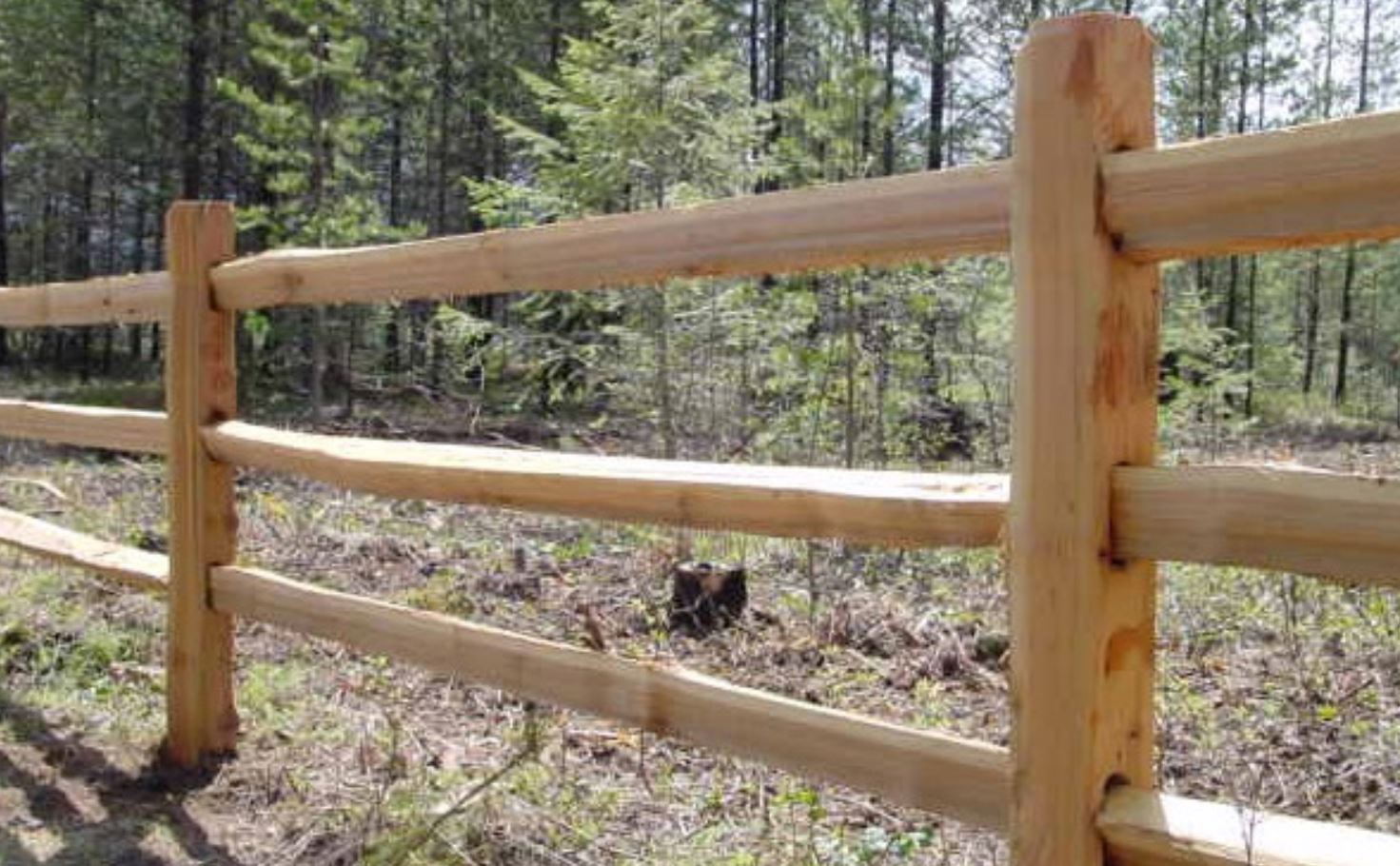Due to its aesthetic value, wood is frequently chosen over vinyl or metal. However, not all woods are the same. While discussing the best wood for the fence, the type of wood you should use for your fence is determined by the quality and rot resistance you require, as well as your budget. For fences, there are various grades and types of wood.
Fences, like other outside wood constructions, are subjected to a variety of variables that cause warping, cracking, and rotting. Unprotected wood fences suffer from rain, humidity, temperature extremes, and damaging insects.
Many gardeners think of pressure-treated timber as a cure against wood rot, but there are other garden fence solutions that can give similar benefits without the drawbacks of treated lumber.
Choosing the Best Wood for Fence
Go with premium and clear-grade wood when selecting a wood grade for your fence. There is a huge variety of types of wood used for fences. Among them, some are of higher quality than standard, better, or quality grade wood, which is less expensive but contains flaws and knots that detract from the appearance of your fence and make it more susceptible to rot and insects. For can consult any well-known fencing company to make a better decision.
Clear and premium grade woods, which have a consistent appearance, are the most durable and of the greatest quality, are the most expensive options. For fence construction, select and construction grade woods are less expensive and of good quality; nevertheless, one side of the lumber may have minor flaws.
Here are different types of wood used for fences:
Cedarwood
Cedarwood is a softwood native to the Pacific Northwest of the United States and Canada and is enlisted among the best wood for fences. Because it is softwood, it is likely to be a short-lived wood. That is not the case; cedarwood is an extremely durable wood with a lifespan of more than 30 years.
The wood has the ability to outlast other types of wood even when left untreated. Cedarwood is inherently resistant to insects and decay, making it an excellent choice for long-lasting fences. Although cedar fences have numerous advantages, they also have a few downsides. Cedar fences are more expensive than other wood fences.
The more lovely and durable the wood is, the more expensive it is in general. If you wish to paint your fence, this fencing option may not be the best. Because cedar has such a vibrant hue, it takes several coats of paint to completely cover it.
Douglas Fir
One of the popular types of wood used for fences is Douglas fir another example of the best wood for fences. This wood has a light brown tint with hints of red and yellow. Depending on the grade, it has a straight, even grain with occasional knots.
It keeps its color for a long time before turning gray, which can be slowed down by sealing. To achieve a particular aesthetic, it can be painted, stained, or sealed. Douglas fir is a popular building material for projects ranging from timber trusses to fencing because of its excellent strength, stability, and high-quality appearance.
It has some natural resistance to rust and decay if left untreated, which can be improved by applying a protective finish. A factory-applied finish is already applied to many Douglas fir fence pickets.
Pinewood
Pinewood is another type of softwood that may be found in much of the United States. Despite being softer than hardwood, this type of softwood is naturally sturdy and shock-resistant. Pinewood is the greatest wood for fences because of these characteristics.
Because of its smooth feel, pinewood is also easy to deal with. Pine is typically a lighter tint, with a milky white hue. Some pinewood kinds, on the other hand, have a bright white tint, while others have a yellowish-white tone. Another advantage of the lighter tint is that staining them with any color you like is easier.
You won't need to paint a second or third coat to get the look you want; one coat will suffice. Pine has noticeable grains with darker knots as well. This provides the fencing material a distinct look that is worth a second look. Thus, it can be the best wood to build a fence.
Redwood
The color of a redwood tree varies depending on the part of the tree. The interior portion of the tree's heartwood is a deep reddish-brown tint. Its sapwood is cream-colored on the outside. It features a tight grain pattern and evenly spaced knots; the higher the grade, the fewer knots.
This wood may take a variety of finishes, but it must first be thoroughly cleaned. It will weather, just like cedar and pressure-treated wood, and the impacts of weathering can be reduced by following a suitable maintenance plan.
The hardest of the three materials, redwood, is extremely robust and long-lasting. It's also incredibly stable after installation, as it won't shrink or distort. The resistance of redwood to insects and decay varies depending on the part of the tree. The hardest wood, heartwood, will be the most resistant.
If you're going to utilize redwood for fence posts, make sure you get the heartwood grade. It is considered the best wood for privacy fences.
What Is the Long-Lasting Wood Fence?
The most durable woods include redwood, cedar, and pressure-treated pine. If manufactured of turnout-resistant wood, a fence can survive up to 20 years. Then posts are usually the first to go; panels, on the other hand, tend to last longer because they don't touch the ground.
Fences must be able to resist the elements all year. As a result, use weather-resistant fasteners like hot-dipped galvanized or stainless-steel nails and screws to attach the parts. So, whether you're building a new fence yourself or looking to hire a contractor for fence installation, it's critical to educate yourself on the benefits and types of wood used for fences.

